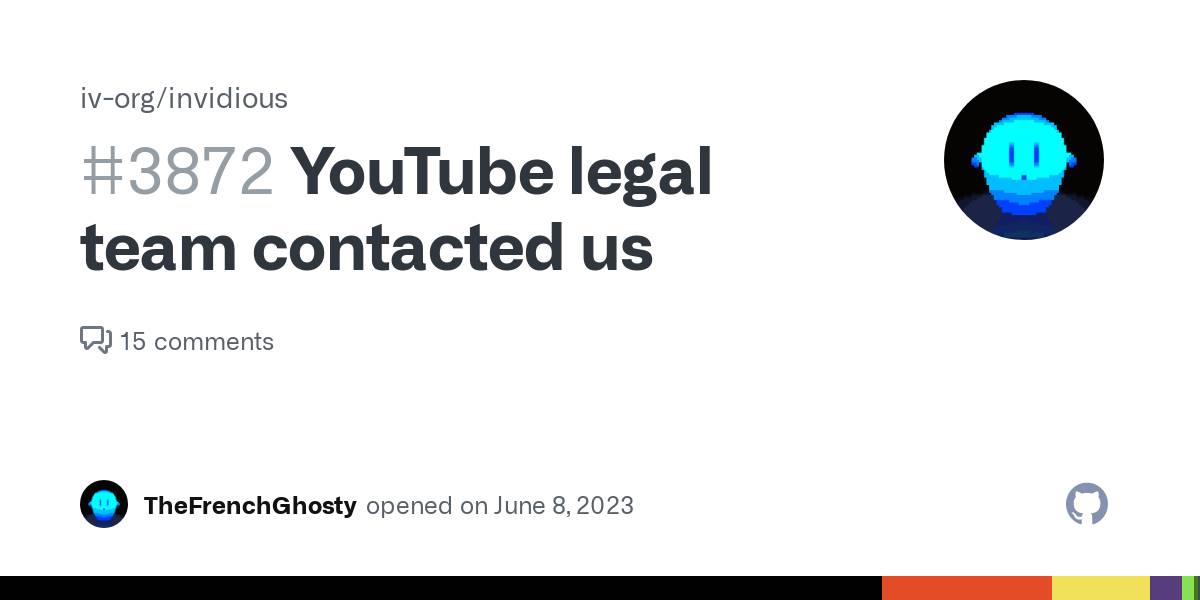Ah, that’s a nice one!
tmpod
- 6 Posts
- 69 Comments

 2·19 days ago
2·19 days agohttps://en.wikipedia.org/wiki/Compose_key
It’s a key that makes the next 2 or more keystrokes be dead key inserts that combineinto some character otherwise impossible to type.
In my case, my keyboard had a ≣ Menu key which I never used, so I remapped it to Compose.

 11·19 days ago
11·19 days agoYou’re correct, but that’s like saying along the lines of manufacturing a car is just bolting and soldering a bunch of stuff. It’s technically true to some degree, but it’s very disingenuous to make such a statement without being ironic. If you’re making these claims, you’re either incompetent or acting in bad faith.
I think there is a lot wrong with LLMs and how the public at large uses them, and even more so with how companies are developing and promoting them. But to spread misinformation and polute an already overcrowded space with junk is irresponsible at best.

 3·19 days ago
3·19 days agoI’ve been getting into the habit of also using em/en dashes on the computer through the Compose key. Very convenient for typing arrows, inequality and other math signs, etc. I don’t use it for ellipsis because they’re not visually clearer nor shorter to type.

 14·19 days ago
14·19 days agoThat is not really true. Yes, there are jump instructions being executed when you run interference on a model, but they are in no way related to the model itself. There’s no translation of weights to jumps in transformers and the underlying attention mechanisms.
I suggest reading https://en.m.wikipedia.org/wiki/Transformer_(deep_learning_architecture)

 1·19 days ago
1·19 days agoGood point regarding ecommerce shops, was not aware they were sold there!
This. And to add to what other commenters have said, by using Bitwarden and paying for their Premium plan (very cheap, just $10/year), even if you don’t use all their features, you’re supporting a good project. It’s critical infrastructure, I think the price is more than fair.
Either way, you should always make periodic backups from any cloud service you use, encrypted of course.

 1·19 days ago
1·19 days agoThis would be really neat, however it’s not trivial to sell those everywhere. If you’re lucky to live in a country or even city where they can get those to, you’re golden. If you don’t, you’re screwed.
Unfortunately, as much as I love the idea and tech behind Monero, actually accepting it is not practical at all, as the coin is used a lot for criminal stuff and is thus very strictly followed by many agencies. We don’t know if they can break it, but even they don’t, businesses can get a rough treatment just for accepting Monero. It’s perfectly understandable if they’d rather not do it.
Adding onto what’s already on the thread, you can try look at the newer Element Call, which is an implementation of Matrix’s native calls.
I’ve been using it a bit recently, since Jitsi seems to have stopped working reliably for me (to be frank, I’ve not put much effort into debugging it yet). It works well, but it’s still early stage, lacking some features Jitsi has. If that one works for you, I recommend you stick to it.

 9·10 months ago
9·10 months agoI still don’t think it’s there, but development hss been fast, so a lot has changed and improved in the last couple of months.

 5·10 months ago
5·10 months agoNot exactly. Matrix 2.0 relates to the protocol (Matrix) version, which has its major number incremented due to a bunch of, well, major changes/updates to make it much better. OIDC, sliding sync and native calls are some of the new things that comprise the 2.0 update.
The server implementations are somewhat orthogonal to this. Synapse (the original Python server) is still the main implementation, and is Matrix 2.0 ready.

 2·10 months ago
2·10 months agoYeah withdraw cash from an ATM and use it. The system sucks, but it’s not trivial to change for a myriad of reasons.

 3·10 months ago
3·10 months agoThere’s no real way to do it. Unless you know someone who can trade you XMR<->cash and you somehow convince your employer to (break laws and) pay you in those forms, you can’t avoid it. At some point, you’ll have to get money on a real bank account, which requires real information to open.

 2·10 months ago
2·10 months agoAs far as I know, modern cards don’t just send your CC info to terminals, they do some form of a cryptographic handshake (probably a pubkey signature or similar) which gets confirmed by your bank. I believe Caveman was talking more about online shopping, where you have to enter your card number, expiration date, CVC and often your name too.

 31·10 months ago
31·10 months agoThat’s why I love virtual card systems like MB NET. You just generate a random virtual card for every purchase (or a recurring one for each subscription vendor, for example) and move on. Your bank still knows what you’re doing, of course, but vendors can’t correlate anything. Preventing your bank from knowing where you’re spending your money is much harder, for very practical reasons: fraud detection. The only real way is to use a secure crypto coin like Monero, but very few places accept it and you still have to deal with volatility.
Ah right, Molly. Have yet to tried it, but looks interesting.
I think I’m too afraid of moving my main stuff to Molly, lest I lose something :P But the UnifiedPush and multiple mobile clients is enticing.
This is a good suggestion. Docker is more mature and has more resources, so it’s better to learn the ins and outs of containers. After getting comfortable with it, you can move to Podman and have a much better time tackling its peculiarities regarding permissions and rootless.
I used Docker for years and only recently decided to give Podman a try, porting my Lemmy instance to it.
Yeah that’s a bummer. Signal has multi device support but only for desktop and iPad (yeah, not Android tablets), but you always need to have a master phone device.
It’s been an issue for so long, but this is Signal, they do whatever the f they want.
encrypted email
Besides being a form of messaging (so the text somewhat contradicts itself), typical email is a deeply insecure protocol.
In my opinion, it’s probably impossible to secure without making a new protocol or making such drastic changes that it might as well be considered one.Here are some key concerns regarding the usual PGP-powered encrypted email:
- Email, at a simple level, works much akin to physical email — there’s an “envelope” containing important info regarding the communicating parties, which can’t be encrypted, otherwise the mailing servers wouldn’t know where to forward the messages. This essentially leaks a lot of metadata that can be almost as valuable as the message body itself.
- There’s no forward secrecy — one of the best cryptography features that has become pretty much a commodity in modern systems is forward secrecy, which prevents attackers from decrypting older messages after gaining access to one of the keys.
- While not an issue with the protocol itself, it’s the sad reality and we need to consider — most people use GMail, Outlook and the like, which ultimately need to read your emails in plaintext, for better or worse reasons (search is incredibly useful, but some big players don’t stop there of course :p).
- Another thing is the fact that it’s incredibly easy to have an imbalance of encryption, i.e. someone is encrypting their messages, but others aren’t. With the very popular email culture of quoting (be it top or bottom posting), an unencrypted party in the the conversation can leak important information.
- PGP is… peculiar, so to speak. I has a lot of issues, mostly stemming from its age (which could also be a source of robustness and security, due to being very battle-tested, but I don’t think that’s quite the case with PGP/GPG), tries to do too much and typically has a clunky UI, which impedes wider and proper adoption by less technically people.
This isn’t to say people should definitely stop using and promoting encrypted email, since it can be useful.
It’s just it gives, more often than not, a false sense of security and can lead less proficient users to send sensitive data through this medium which isn’t nearly secure enough for such use cases. Preferably, people with such threat models should opt for better alternatives, most suggested in that article (such as, but definitely not limited to, Signal, SimpleX, Matrix+Olm, XMPP+OTR/OMEMO, sharing files via MagicWormhole, encrypting with tools like age).On a slightly tangential note, I think someone should make a Matrix client with an email client interface. I started working on a new traditional chat client (completely nonfunctional still, very much in-dev), but I’ve been honestly thinking more and more about making one looking like an e-mail client, where there isn’t much focus on instant room-based chats, but rather on longer-lived 1-to-1 and list-like exchange of messages.










Yes! Oh my, I’m silly; that was precisely my point and I managed to mess it up 🙃
Thank you for the correction!